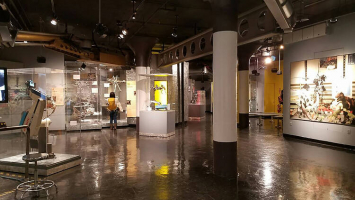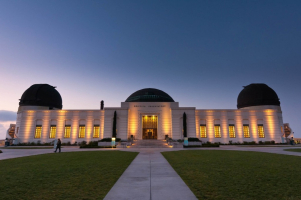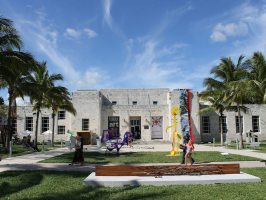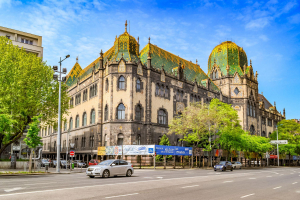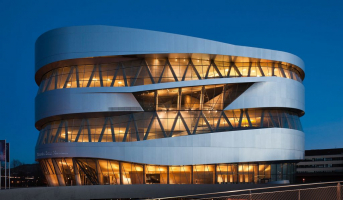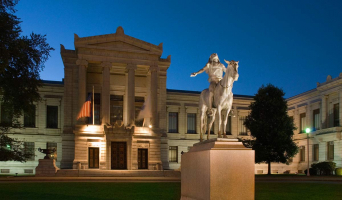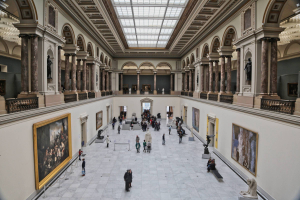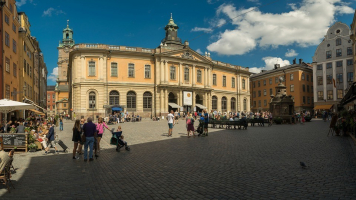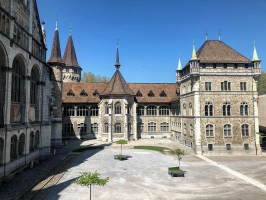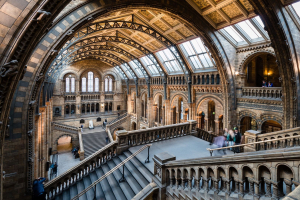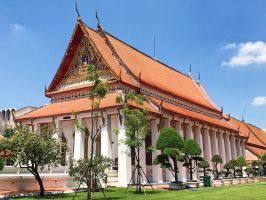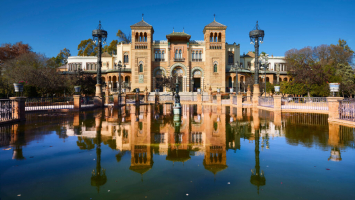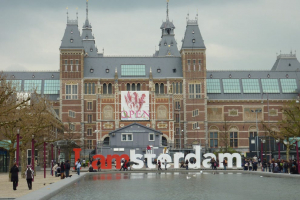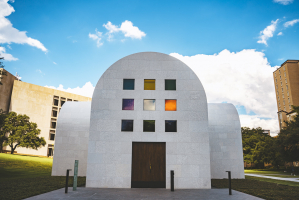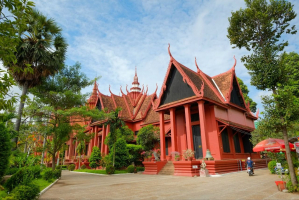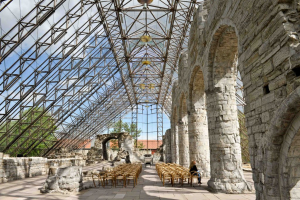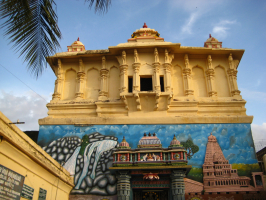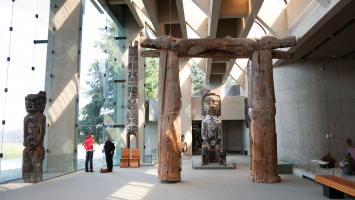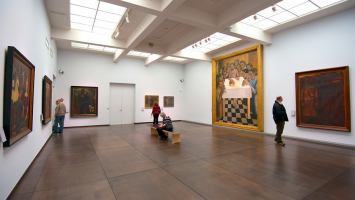Top 15 Best Museums to Visit in Paris
Paris is much more to the City of Light's museum offering than Mona Lisa's grin. You must visit the Louvre at least once, but that does not mean you should ... read more...overlook the city's outstanding collection of museums, attractions, and things to do. There's a museum for visual art in all its forms here, whether it's contemporary art, fashion, architecture, or temples to Monet and Picasso. Let's check out the Best Museums in Paris below!
-
The most prominent art collection in Paris (and one of the most known in the world) is housed at this outstanding museum, which is housed in the old royal palace of French kings. Visiting the Louvre gives you a crash course in some of the Western Civilization's greatest works of art.
The Louvre's vast collection of over 30,000 works of art includes everything from Egyptian, Greek, and Roman antiquities to European paintings from the 13th to the 19th centuries. The French crown jewels, antique French furniture, Islamic art, and Neoclassical 18th-century statues are also on display. The Louvre's painting collection is one of the world's most extensive, including all periods of European art from the Renaissance through the Revolutions of 1848. The Louvre houses the world's best collection of French paintings from the 15th to the 19th centuries, as well as several masterpieces by Italian Renaissance painters, including Leonardo da Vinci's Mona Lisa (c. 1503–19), and works by Flemish and Dutch Baroque painters.
Address: Rue de Rivoli, 75001 Paris
Official site: http://www.louvre.fr/en/homepage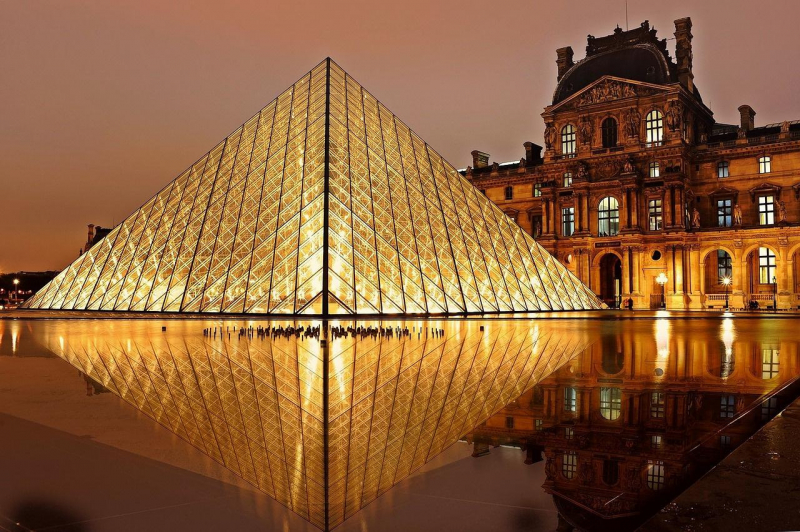
Musée du Louvre 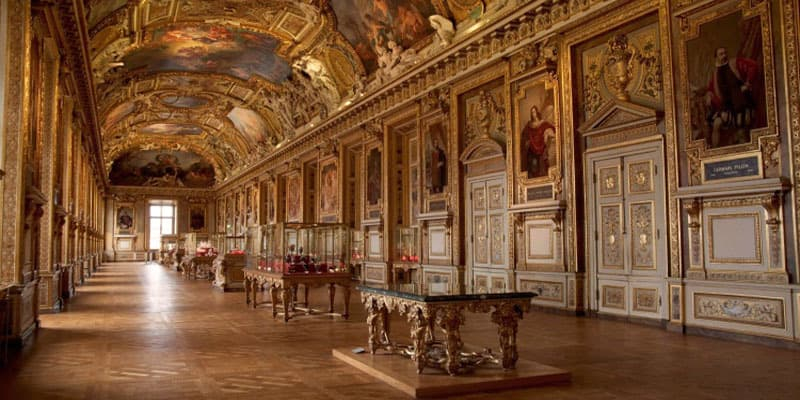
Musée du Louvre -
In a converted Belle Epoque railway station, the Musée d'Orsay houses an unparalleled collection of 19th and 20th-century art (from 1848 to 1914). The collection includes works by Boudin, Caillebotte, Corot, Courbet, Degas, Manet, Monet, Pissarro, Sisley, Renoir, and Vuillard, among others.
The collection follows the evolution of the Impressionism movement, then continues with Post-Impressionism, including works by Bonnard, Cézanne, Gauguin, and Van Gogh, as well as the Pointillists, Seurat, and Signac. There are also drawings and paintings by Toulouse Lautrec, the legendary Bohemian artist from Montmartre. The museum's most outstanding works include Claude Monet's Coquelicots (Poppies), Gare Saint-Lazare, and Nymphéas Bleus (Blue Water Lilies); Renoir's La Balançoire (The Swing), etc. The museum has a bookshop boutique, a stylish café with aquatic-themed décor, and an exceptional gourmet restaurant (designated as a Historical Monument) with sparkling chandeliers, gilded moldings, and a magnificent painting on the ceiling, all of which are well designed to welcome tourists.
Address: 1 Rue de la Légion d'Honneur, 75007 Paris
Official site: http://www.musee-orsay.fr/en/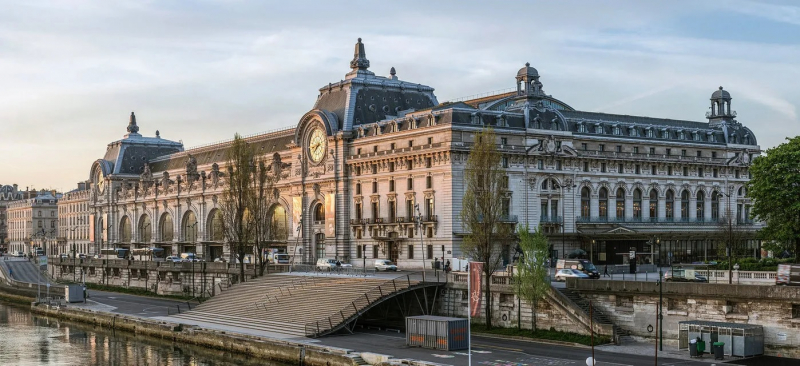
Musée d'Orsay 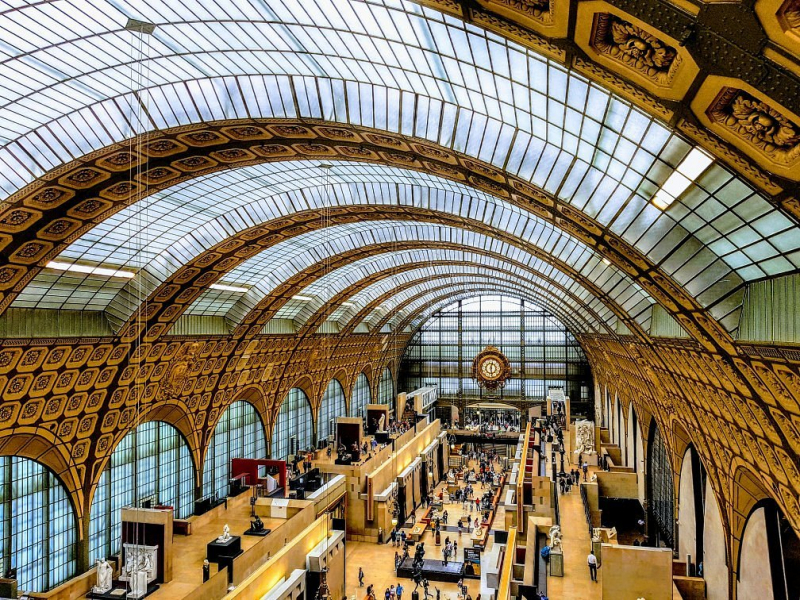
Musée d'Orsay -
The Musée de Cluny is located on a quiet street off the Boulevard Saint-Germain, in the 15th-century Hôtel des Abbés de Cluny (Abbey House). Being one of the Latin Quarter's most popular attractions, the museum houses a fantastic collection of medieval paintings, sculptures, stained glass, and church treasures.
The Lady with the Unicorn (Dame à la Licorne) series, which dates from the late 15th and early 16th centuries, is one of the museum's most famous tapestries. This collection of six "millefleurs" ("thousand flowers") style tapestries features a wealth of blossoms, trees, and friendly animals, all rendered in great detail. One of the museum's rooms is part of the Frigidarium (room of the cold bath), a two-thousand-year-old Roman baths archaeological site. This room has a small collection of statues, mosaics, and other antiquities, including Gallo-Roman sculptures. Outside the museum, along the Boulevard Saint-Miche, you can view the rest of the Roman baths complex, the Thermes de Cluny, which was built around AD 200.
Address: 28 Rue du Sommerard, 75005 Paris
Official site: https://www.musee-moyenage.fr/en/home.html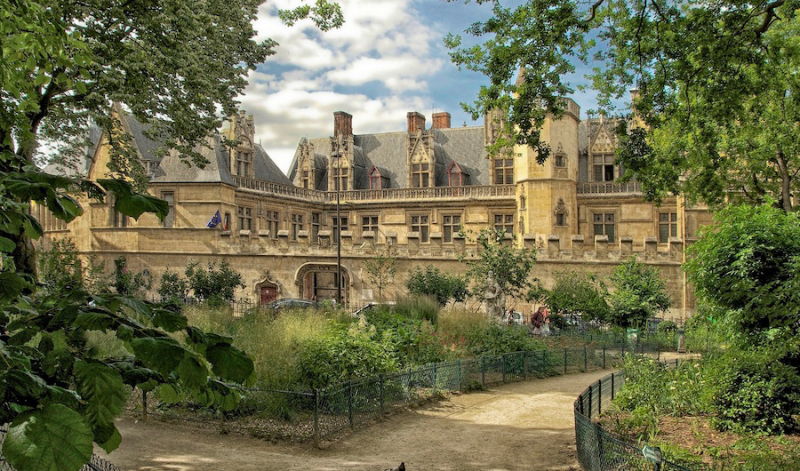
Musée de Cluny (Musée National du Moyen Âge) 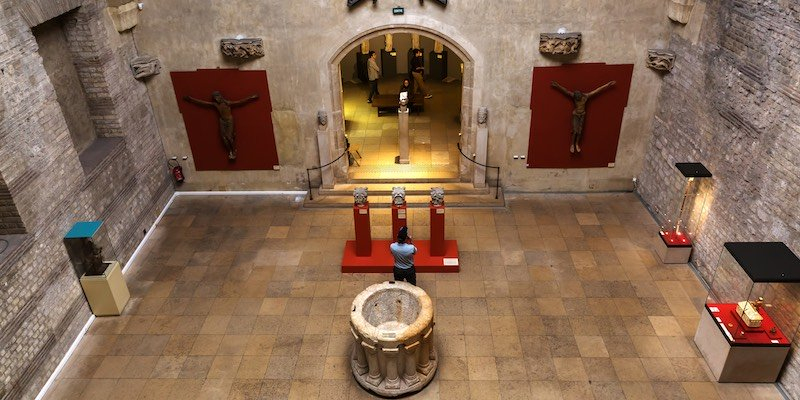
Musée de Cluny (Musée National du Moyen Âge) -
The Musée National d'Art Moderne, located in the Pompidou Center, houses a large collection of 20th- and 21st-century art arranged sequentially, beginning with the Modern collection (which includes Braque, Duchamp, Dufy, Matisse, Kandinsky, and Picasso) and ending with the Contemporary collection (works by Mark Rothko, Andy Warhol, and other renowned artists born after 1920).
The museum houses a Film and New Media collection that includes visual art installations as well as experimental and artistic films ranging from 1902 to the twenty-first century. The center's Café le Central snack bar on Level 1 and the rooftop (Level 6) Restaurant Georges, which offers spectacular views of Paris, including the Eiffel Tower in the distance, are also popular with visitors. The Centre Pompidou also features three bookshops and a gift and souvenir boutique.
Address: Place Georges-Pompidou, 75004 Paris
Official site: https://www.centrepompidou.fr/en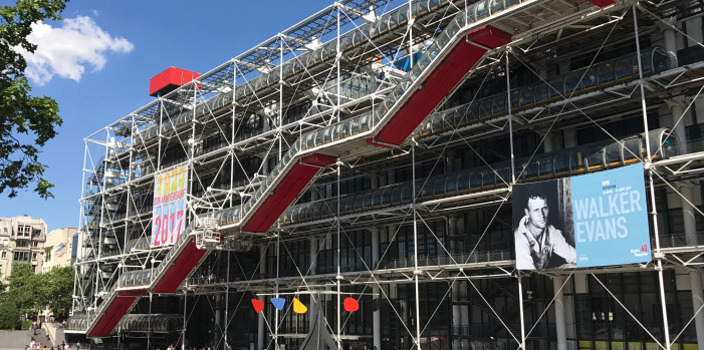
Musée National d'Art Moderne 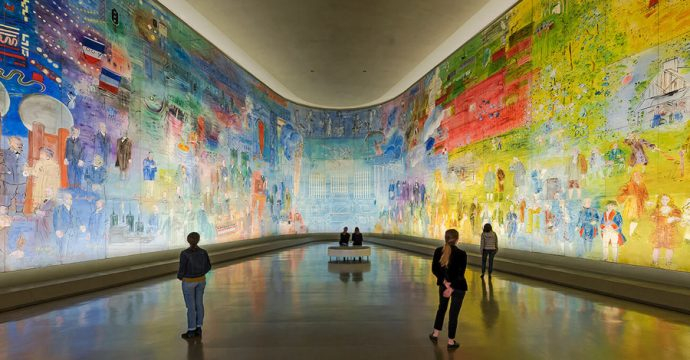
Musée National d'Art Moderne -
The Petit Palais (Small Palace) is a beautiful building featuring several art collections dating from Antiquity to 1920. The Petit Palais is also known as the City of Paris Museum of Fine Arts. The Petit Palais, a built-in luxurious Belle Epoque style for the 1900 Universal Exhibition, was converted into a museum in 1902. The ornate sculptural details and murals on the structure create an ideal backdrop for the artworks on display.
Masterworks of European painting by Eugène Delacroix, Rembrandt, Peter Paul Rubens, Nicolas Poussin, Jacques Louis David, and other renowned artists; and a wonderful collection of Impressionist paintings by Bonnard, Cézanne, Monet, Morisot, Pissarro, Renoir, Sisley, and Vuillard are among the collection's highlights. And Claude Monet's Soleil Couchant sur la Seine (Sunset on the Seine), Rembrandt's self-portrait, Fragonard's Jérôme de La Lande, Delacroix's Combat du Giaour et du Pacha, and Charles-Alexandre Giron's La Parisienne are among the works worth seeing.
Address: Avenue Winston Churchill, 75008 Paris
Official site: http://www.petitpalais.paris.fr/en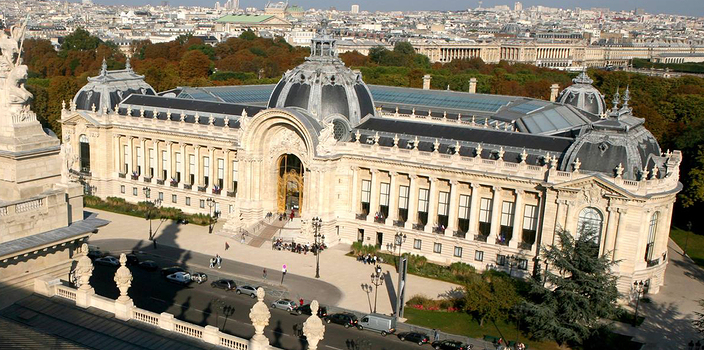
Petit Palais: Musée des Beaux-Arts de la Ville de Paris 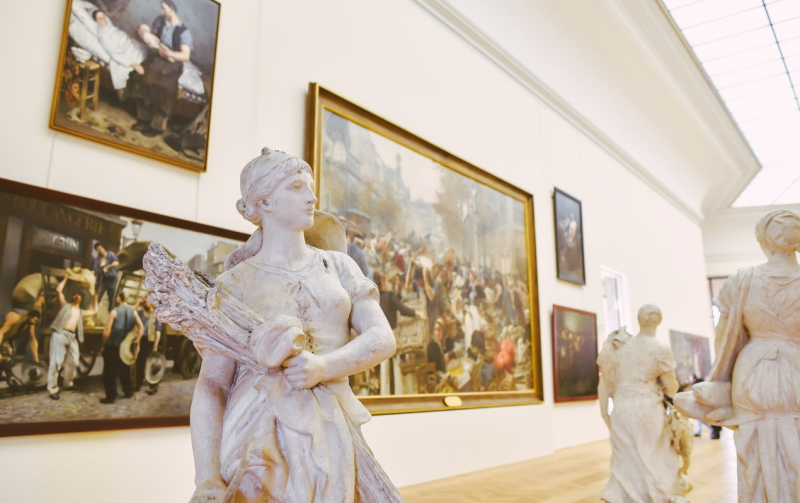
Petit Palais: Musée des Beaux-Arts de la Ville de Paris -
The Rodin Museum is housed in the Hôtel Biron, a Neoclassical-style mansion that is recognized as a Historical Monument from the 18th century. The property's formal garden, with its shady trees and well-kept shrubbery, inspired French sculptor Auguste Rodin.
Hundreds of works by Rodin, including his famous sculptures as well as his paintings and drawings, are on display in the museum. Rodin's collection, which includes works by Claude Monet, August Renoir, and Vincent van Gogh, is also on display. The Thinker (Le Penseur), the Monument to the Burghers of Calais (Les Bourgeois de Calais), and The Gates of Hell (La Porte d'Enfer) are among the sculptures on display in the stunning three-hectare Sculpture Garden. After visiting the collections in the mansion, guests can stroll around the Sculpture Garden and have lunch or afternoon tea or coffee and dessert at L'Augustine, a café-restaurant.
Address: 77 Rue de Varenne, 75007 Paris
Official site: http://www.musee-rodin.fr/en/home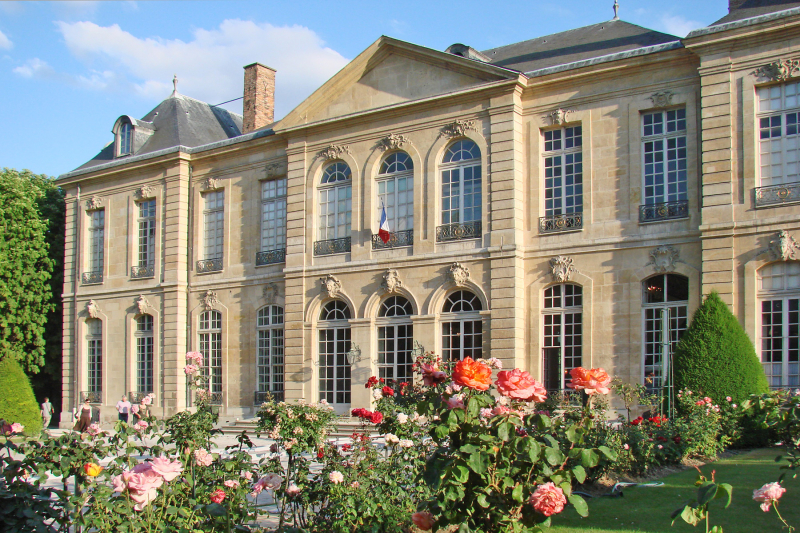
Musée Rodin 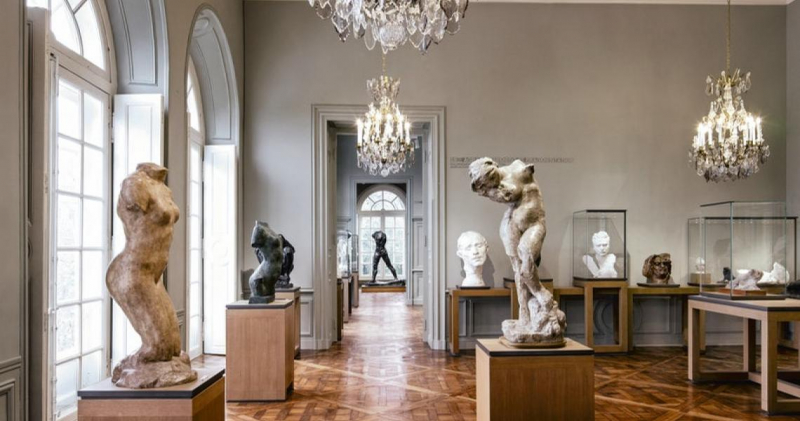
Musée Rodin -
The Musée Marmottan Monet is a must-see location for Impressionist fans, located in the former hunting lodge of the Duke of Valmy in the picturesque Bois de Boulogne park. The museum houses the works of Claude Monet, France's most famous Impressionist artist.
The Musée Marmottan Monet has the world's biggest collection of Monet paintings, with over 100 works reflecting the artist's career evolution. The collection includes works of great rarity in addition to its impressive number of pieces. The collection begins with Monet's initial Impression, Soleil Levant (1872), which gave Impressionism its name, and continues chronologically until his Nymphéas (Water Lilies) series, which he painted in his final years in Giverny. Monet's famous work Le Train dans la Neige is among the collection's treasures that includes En Promenade Près d'Argenteuil (1875); Pont de l'Europe (1877); Rouen Cathedral (1892); and Londres, Le Parlement, Reflets sur la Tamise (1905).
Address: 2 Rue Louis-Boilly, 75016 Paris
Official site: http://www.marmottan.fr/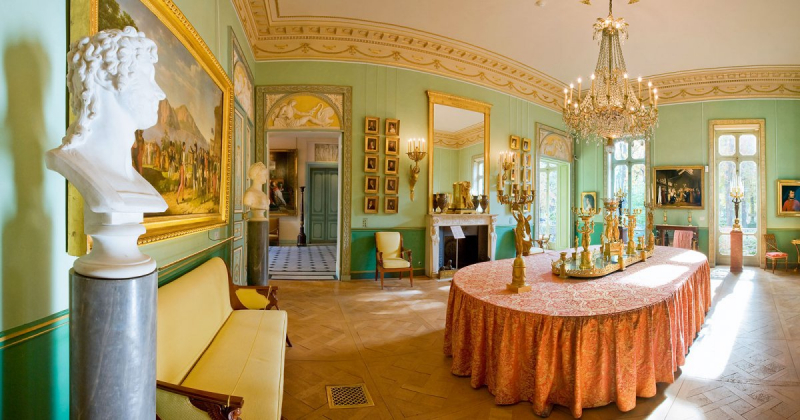
Musée Marmottan Monet 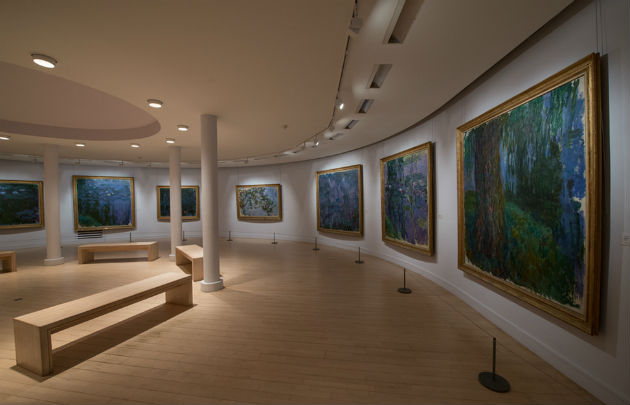
Musée Marmottan Monet -
The Musée Carnavalet - Histoire de Paris, which reopened in 2021, is located in a quiet corner of Le Marais, an atmospheric neighborhood known for its magnificent medieval and Renaissance palaces. The museum's old buildings were beautifully refurbished over the course of many years (from 2017 to 2021). The display areas were redesigned as part of the restoration to improve the visitor experience.
The museum's extensive collection (approximately 3,800 pieces) of antiquities, historical paintings, drawings, and objects of art portrays the history of Paris. Prehistoric artifacts, medieval relics, and Belle Epoque décor are among the exhibits. With photographs of student protests in the 1960s and displays about the 2019 Notre Dame fire, the collection spans contemporary history. Portrait paintings and profiles of famous Parisians are among the works on display, highlighting the city's most powerful citizens. The collection documents the intellectual and cultural growth of Paris while covering major events such as the Wars of Religion and the French Revolution.
Address: 23 Rue de Sévigné, 75003 Paris
Official site: https://www.carnavalet.paris.fr/musee-carnavalet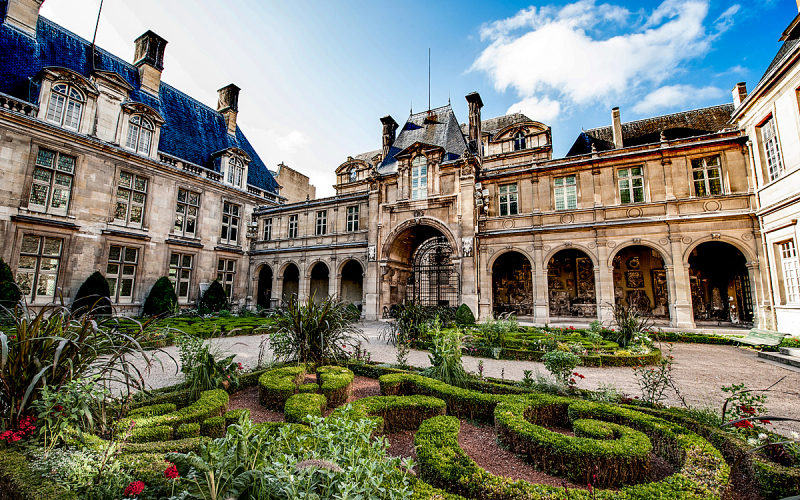
Musée Carnavalet - Histoire de Paris 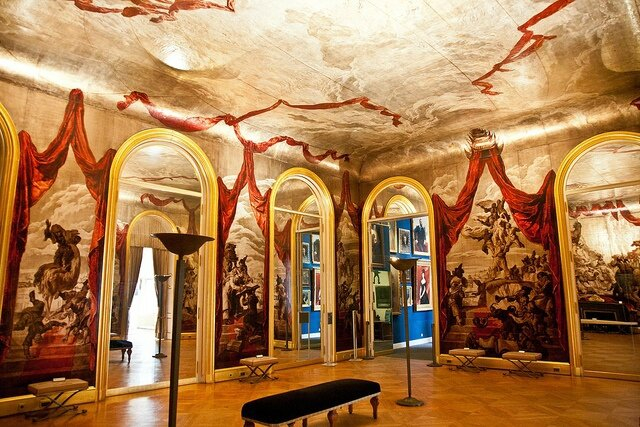
Musée Carnavalet - Histoire de Paris -
One of the greatest places to see Impressionist art in Paris is the Musée de l'Orangerie. The Orangerie Museum is similar to the Musée d'Orsay in that it focuses on Impressionism and 19th- to 20th-century art, but it is smaller and less well-known, therefore it is usually less crowded.
Tourists will admire the beautiful Impressionist paintings in this intimate setting. The museum features works by Impressionists (Monet, Sisley, and Renoir), Post-Impressionists (Cézanne, Gauguin, Matisse, and Derain), and Modernists (Modigliani, Picasso, and Soutine). The museum's Nymphéas (Water Lilies) series, displayed in two elliptical rooms and dubbed the "Sistine Chapel of Impressionism" by André Masson in 1952, is a highlight. The enormous size of the panoramic paintings will first impress the visitor and it also has a series of eight paintings that spans 200 square meters, covering the entire wall space of both exhibition rooms.
Address: Jardin des Tuileries, Place de la Concorde, 75001 Paris
Official site: https://www.musee-orangerie.fr/fr
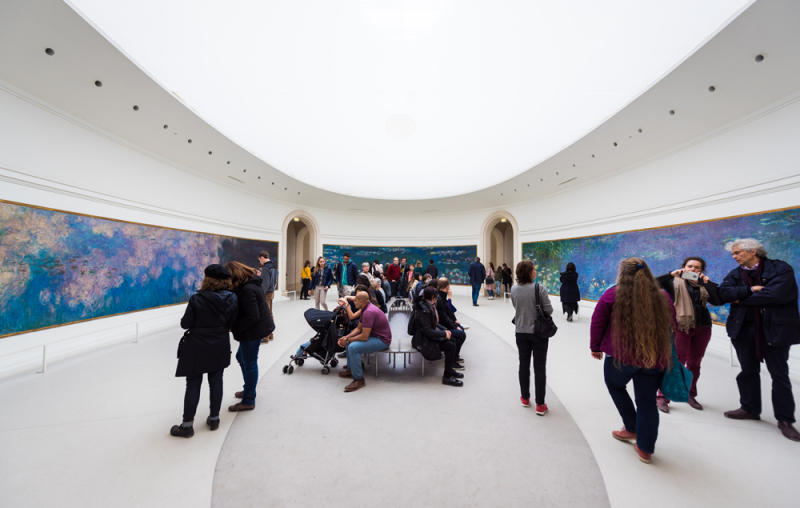
Musée de l'Orangerie 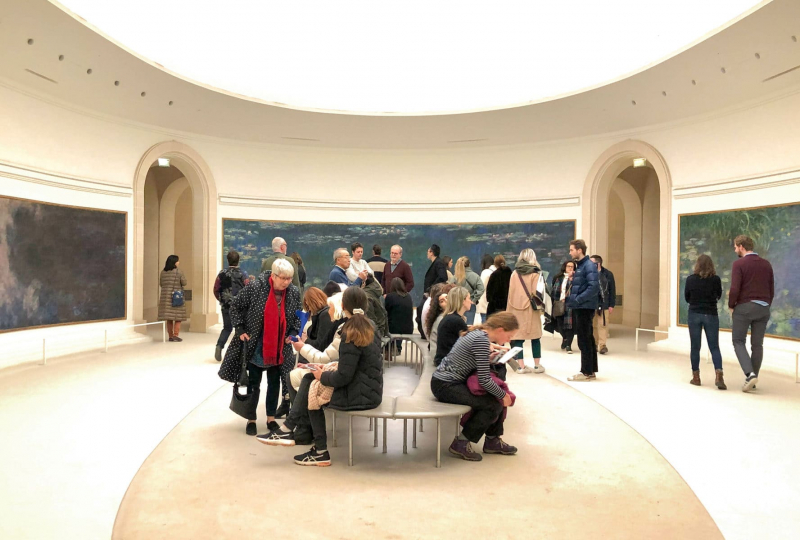
Musée de l'Orangerie -
The Musée Jacquemart-André is housed in a sumptuous 19th-century mansion built for Edouard André and Nélie Jacquemart, who hosted lavish parties in their Grand Salon for Paris' high society.
The house displays the refined tastes of the affluent couple (Edouard and Nélie), who were passionate about 18th-century French artwork as well as Italian Renaissance art. Masterworks by Elisabeth Lebrun, Fragonard, Jacques-Louis David, Rembrandt, Giovanni Bellini, Botticelli, and Tiepolo are among the couple's private art collections. The Café Jacquemart-André, located in the mansion's elegant former dining room, provides light meals such as mixed salads and quiche. Guests may try the best Parisian pastries from the renowned Pâtisserie Stohrer during tea time. On Sundays from 11 a.m. to 2:30 p.m., the Café Jacquemart-André serves a special brunch menu.
Address: 158 Boulevard Haussmann, 75008 Paris
Official site: https://www.musee-jacquemart-andre.com/en/home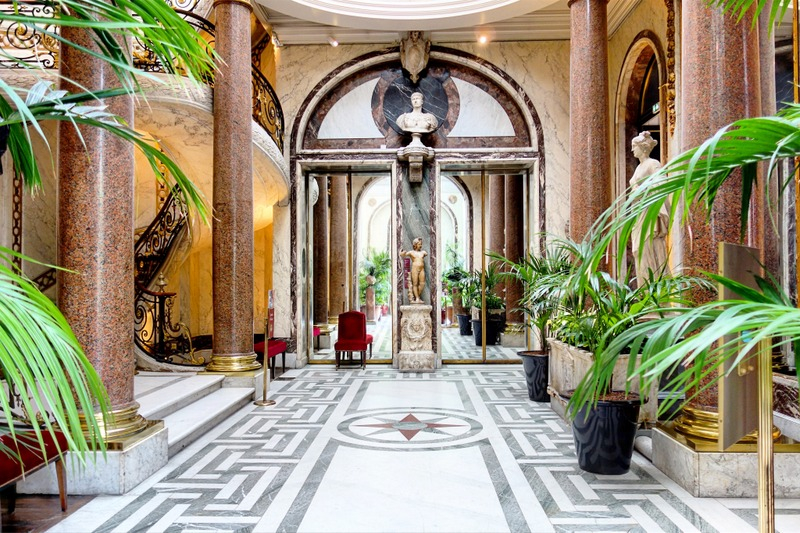
Musée de l'Orangerie 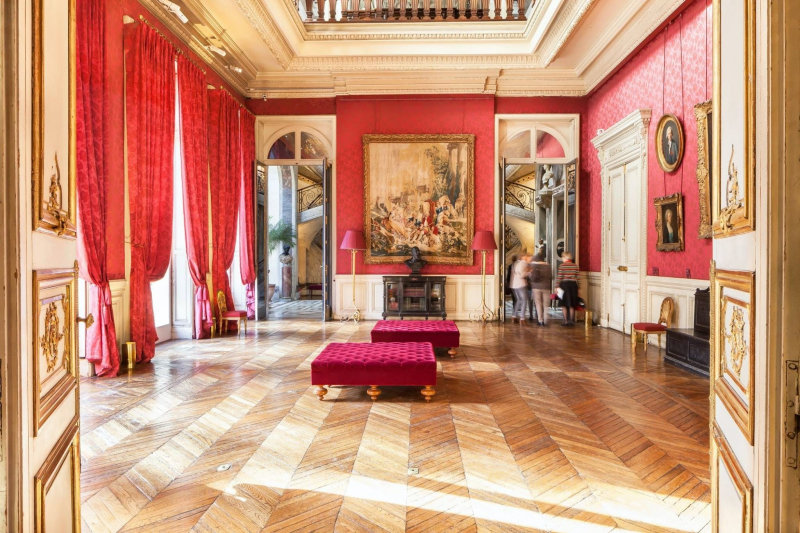
Musée de l'Orangerie -
The Musée National Picasso-Paris, which was renovated in 2014, is housed in the Hôtel Salé, one of Paris's largest 17th-century aristocratic mansions. The mansion's 3,700 square meters of exhibition space is home to a diverse collection of Picasso paintings, sculptures, and drawings covering the artist's entire career. The museum has the world's greatest collection of Picasso's paintings, with over 5,000 pieces.
Picasso's Self-Portrait and La Célestine from the Blue Period, the Demoiselles d'Avignon (Young Ladies of Avignon), and the Homme à la Mandoline (Man with Mandolin) from the Cubist Period are among the most iconic works in the collection. The paintings of Large Nudes, vibrant Matadors, and amusing Musicians are also remarkable. Picasso's personal art collection, which is exclusive to the Musée Picasso is a must-see. Picasso's collection contains works by Braque, Cézanne, Corot, Degas, Derain, Gauguin, Renoir, Matisse, Miró, and Rousseau, among others.
Address: 5 Rue de Thorigny, 75003 Paris
Official site: http://www.museepicassoparis.fr/en/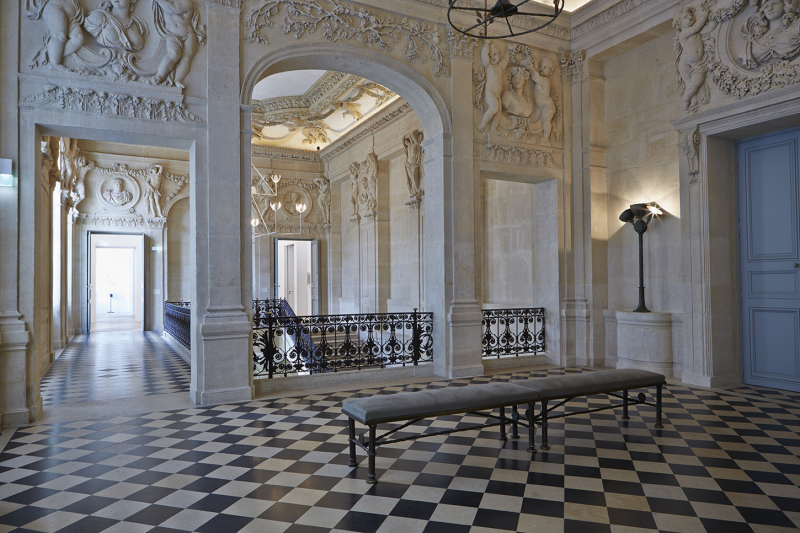
Musée National Picasso-Paris 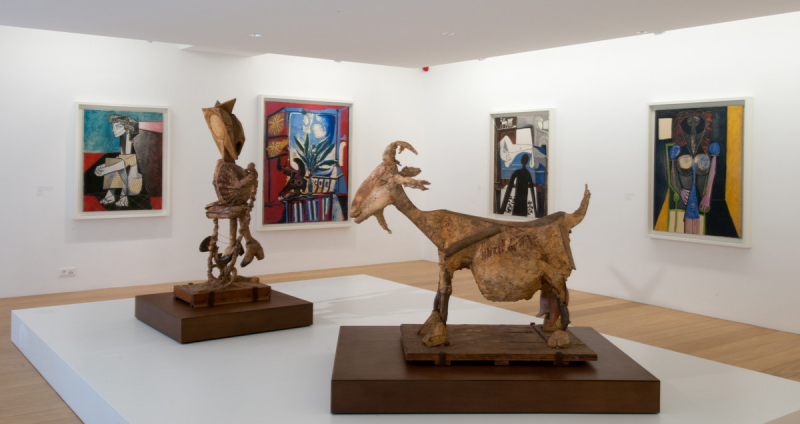
Musée National Picasso-Paris -
Institut du Monde Arabe was founded to encourage cross-cultural interaction through lectures, music concerts, film screenings, dance and theater performances, poetry readings, and temporary exhibitions that are accessible to the general public. In conjunction with the institute's Centre de Langue et de Civilisation, Arabic language lessons are available.
The institute's museum includes three departments. Islamic Art includes ceramics, calligraphy, historic manuscripts, traditional carpets, textiles, and jewelry. Ethnography includes exhibits about society, culture, and everyday life in various areas of the Arab world. And Modern and Contemporary Art includes works by Muslim artists since the 1920s. The institute's museum offers a comprehensive view of the Arab world's many civilizations. The collection begins in antiquity and focuses on the 3rd century, when the Arabic language and the true identity of Arab culture develop, as well as the early influence of the Islam religion in the 7th century.
Address: 1 Rue des Fossés Saint-Bernard, 75005 Paris
Official site: https://www.imarabe.org/en/museum/the-museum-s-collection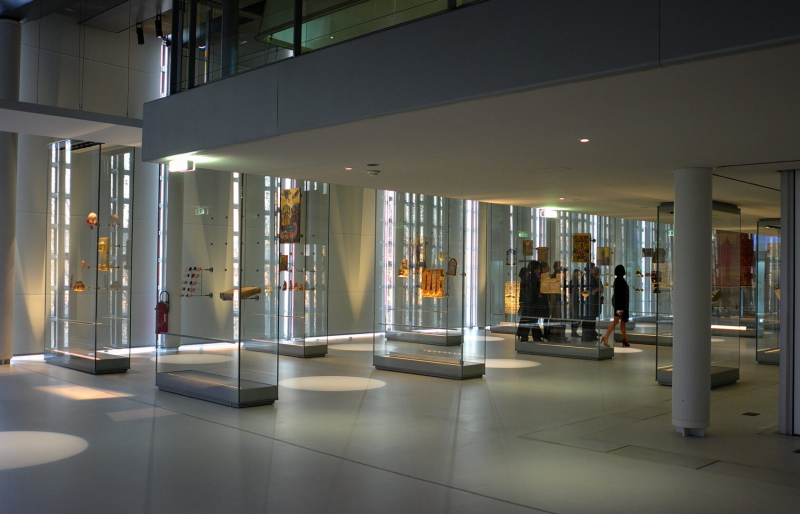
Institut du Monde Arabe (Arab World Institute) 
Institut du Monde Arabe (Arab World Institute) -
The Musée des Arts Décoratifs (Decorative Arts Museum) was founded aim to exhibit and preserve decorative arts. The museum, which is located at 107 Rue de Rivoli in the city's 1st arrondissement, is housed in the Palais du Louvre's Pavillon de Marsan, which is the most north-western wing. The Musée des Arts Décoratifs is the largest decorative arts museum in continental Europe, with over one million artifacts in its collection.
The museum's extensive collections date back to the 13th century in Europe. The majority of the collection today is made up of French furniture, tableware, carpets from Aubusson, porcelain from the Manufacture Nationale de Sèvres, and several glass works by René Lalique, Émile Gallé, and others. It features pieces in the Art Nouveau and Art Déco styles, as well as modern examples by designers such as Eileen Gray and Charlotte Perriand. The permanent collection also includes works by Camille Fauré.
Address: 107 - 111 Rue de Rivoli, 75001 Paris
Official site: https://madparis.fr/en/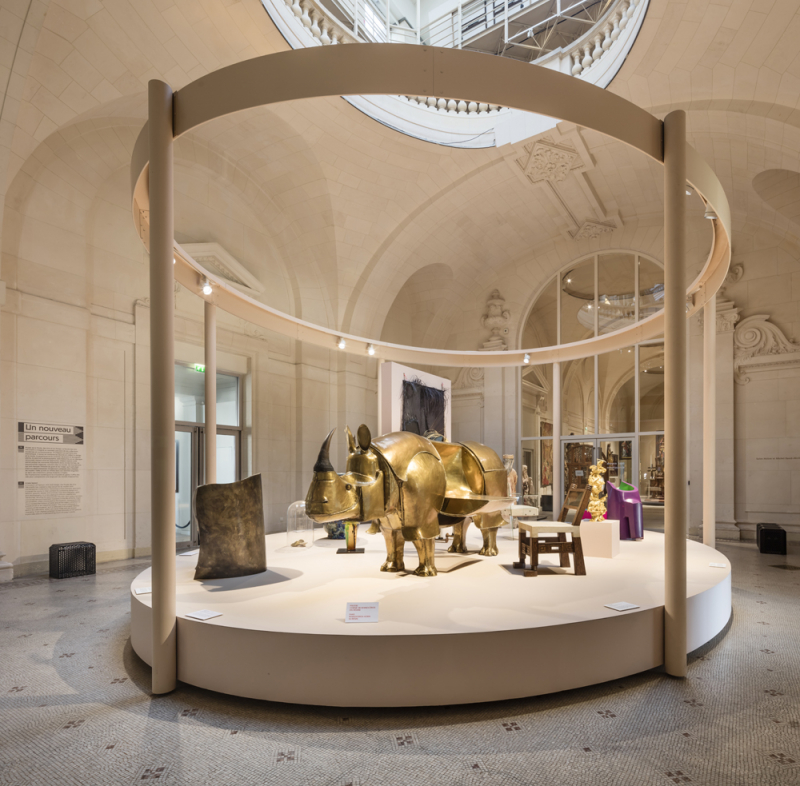
Musée des Arts Décoratifs 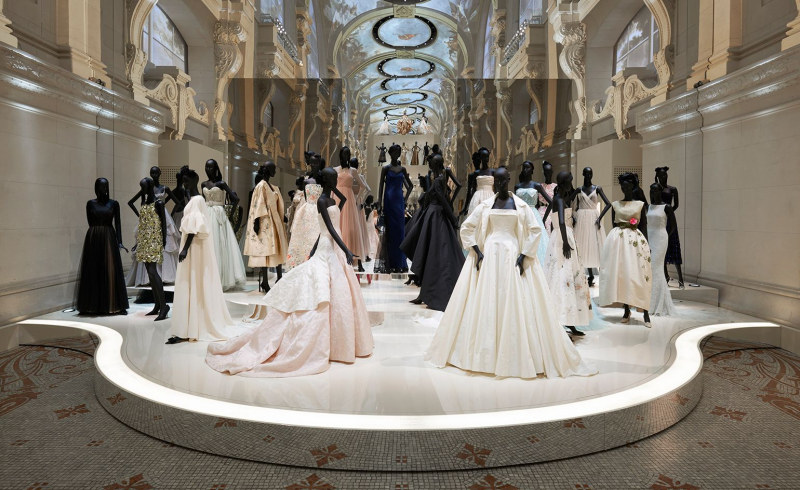
Musée des Arts Décoratifs -
This stately Neoclassical palace hides a remarkable 18th-century secret world. The palace is located on the Place de la Concorde, which was previously known as the Place Louis XV and had an equestrian statue of the king (removed during the Revolution).
The Royal Crown Jewels, furniture, weapons, and armor that belonged to Louis XV and his family were moved to the Hôtel de la Marine in 1765. The inside may be visited to see the magnificent 18th and 19th-century decor as well as the views of the Place de la Concorde. The monument's 250-year history is told through a self-guided audio tour. Every day, the Hôtel de la Marine is open. A restaurant, café, and bookstore/gift shop are available. On Fridays, late-night openings are available until 10 p.m. The building's interior courtyard is also available every day from 9 a.m. to midnight.
Address: 2 Place de la Concorde, 75008 Paris
Official site: https://www.hotel-de-la-marine.paris/en/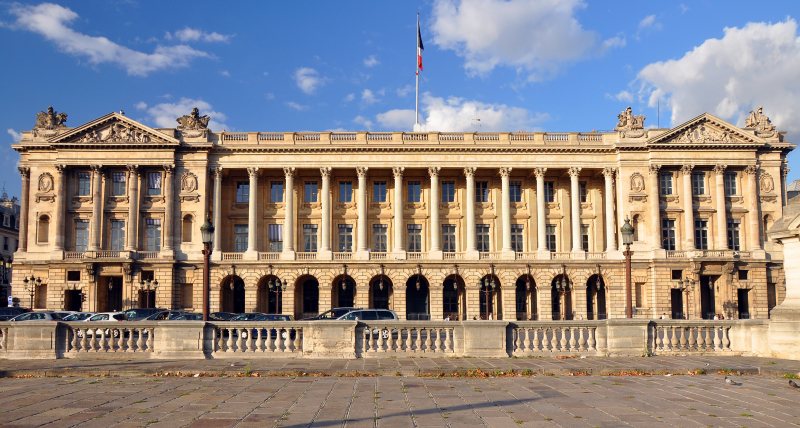
Hôtel de la Marine 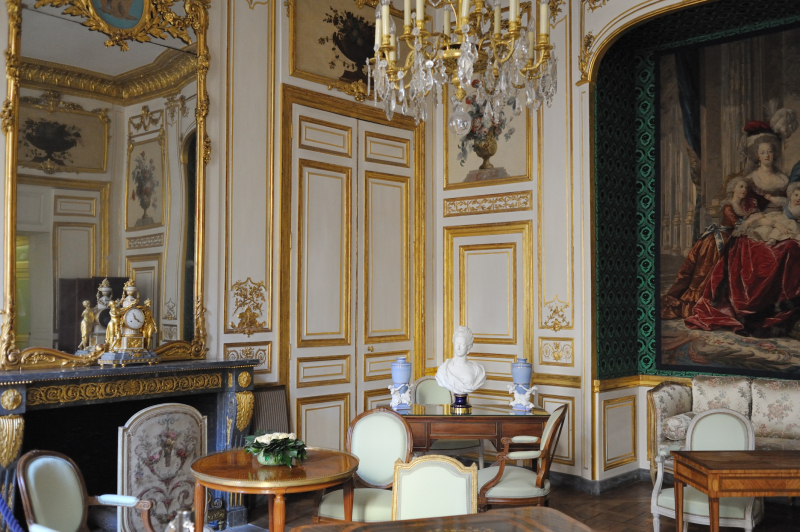
Hôtel de la Marine -
The Museum of Modern Art in Paris is situated in an Art Nouveau building that was built for the International Art and Technical Exhibition in 1937. The museum is dedicated to all types of contemporary art, including paintings, sculptures, installations, photographs, and videos.
Cubism, Ecole de Paris, abstract art, new realism, and other 20th-century art styles are represented in the museum's permanent collections, which contain over 15,000 pieces of art. Among the artists included in the collection are Bonnard, Braque, Chagall, Derain, Dufy, Léger, Matisse, Modigliani, Picasso, and Vuillard, among others. The collection covers the major movements in contemporary art with its diverse selection of artists. Throughout the year, the museum hosts temporary exhibitions.
Address: 11 Avenue du Président Wilson, 75116 Paris
Official site: http://www.mam.paris.fr/en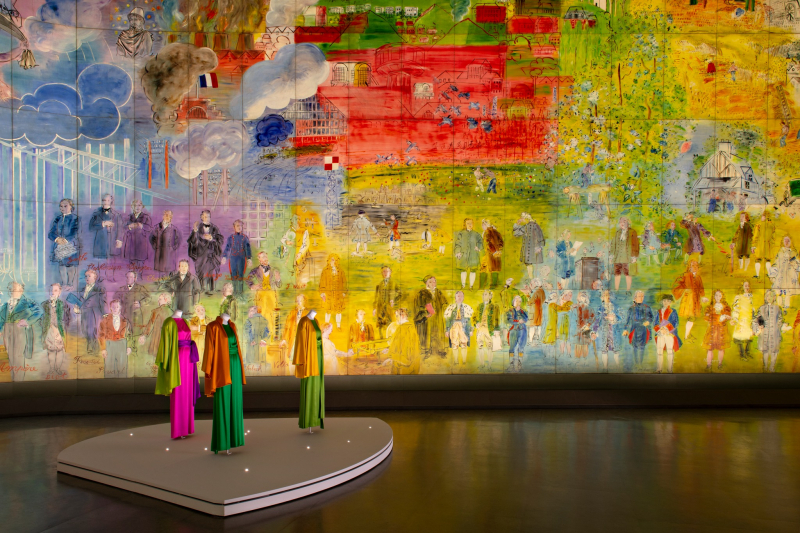
Musée d'Art Moderne de la Ville de Paris 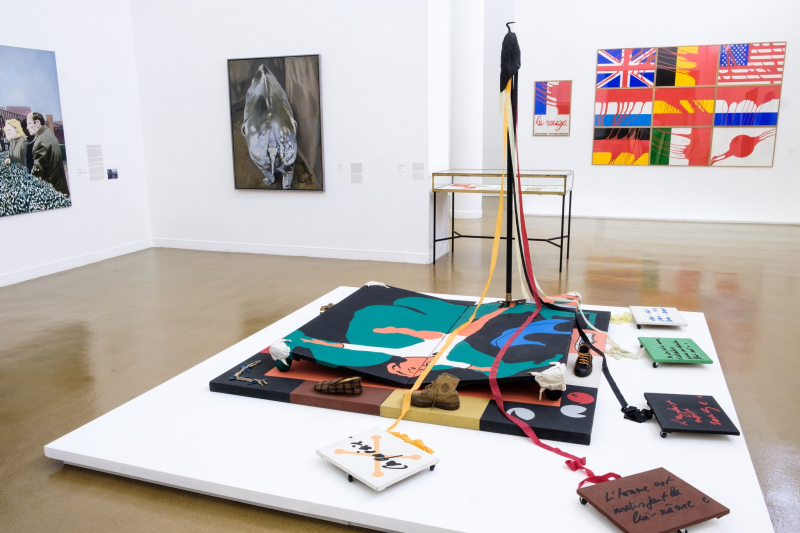
Musée d'Art Moderne de la Ville de Paris

















